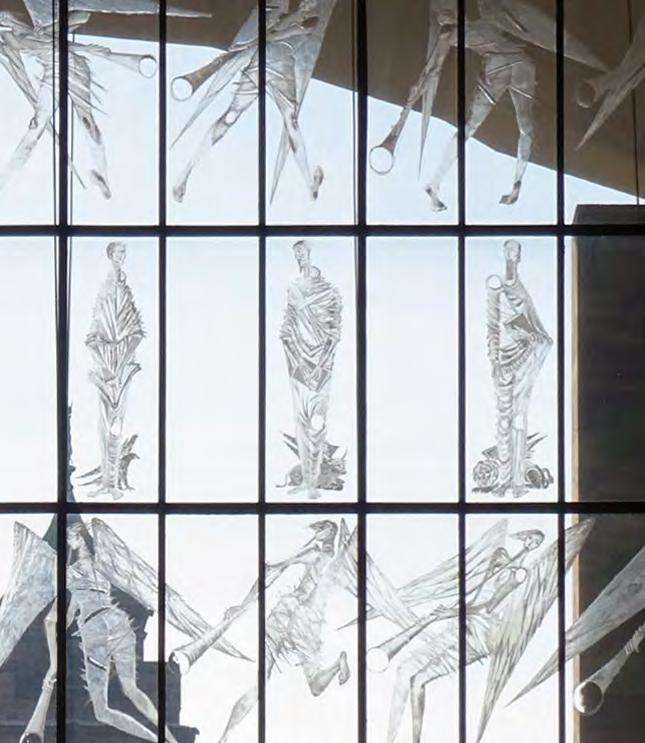CONSERVATION FRAMEWORK
5.3.12 LANDSCAPE AND SETTING See also: 5.3.4
Ruined cathedral
5.3.7
Restoration and new works
5.3.9
Visitor facilities and access
5.3.10
Interpretation
HERITAGE CONSIDERATIONS Setting is the surroundings in which a heritage asset is experienced. Setting may change as the asset and its surroundings evolve. Elements of a setting may make a positive or negative contribution to the experience and significance of an asset, may affect the ability to appreciate that significance or may be neutral. Its definition goes beyond views, to the intangible aspects such as smells, sounds, sights and experiences. The setting of Coventry Cathedral, within the City of Three Spires, extends beyond its immediate setting of Hill Top, to include long distance views across the city. Whilst these views are an important consideration, the focus of this section is on the immediate setting within the Precinct and Hill Top Conservation Area. The parameters of the Cathedral’s setting can be extended more widely in the future. The Cathedral will work with the CPA to protect long distance views as far as this is in their power
When considering change within the setting of the Cathedral, it is recommended that Historic England’s guidance (Advice Note 3) is referred to, which sets out the following steps for assessment: Step 1: Identify which heritage assets and their settings are affected. Step 2: Assess the degree to which these settings make a contribution to the significance of the heritage asset(s) or allow significance to be appreciated. Step 3: Assess the effects of the proposed development, whether beneficial or harmful, on that significance or on the ability to appreciate it. Step 4: Explore ways to maximise enhancement and avoid or minimise harm.
VULNERABILITIES AND CONFLICTS There is a general, concern that the setting of Coventry Cathedral is being eroded in character and in condition. The original intent of Gibson and Spence has been compromised by the Cathedral Lanes development, which blocks physical and visual connections. Over time, development has moved away from the Post-War vision for the city and has become incremental, low-quality and lacking understanding of how areas of the city connect with one another. Other issues include a lack of maintenance, intrusive advertisements and signage, lack of material continuity, issues with parking and generally poor-quality street furniture. Issues identified by J&L Gibbons as part of their assessment of setting include:80 •
The ruined cathedral’s consecrated ground is cluttered so that the character feels municipal in the worst sense, compromising the inherent symbolic beauty of the ruins and consequently their spiritual impact.
•
The gardens, including the Unity Lawn and green space adjacent to the tower, provide vital greenspace but require an overall landscape vision for rejuvenation. This should be approached with caution. There are no known burials but these could exist. The green space has been used in the past for the scattering of ashes.
•
Surrounding streets paved with traditional materials are significant to the charm and distinctiveness of the Cathedral Precinct and Conservation Area, but do not extend sufficiently to aid wayfinding to the heart of the Cathedral quarter.
80
J & L Gibbons, Coventry Cathedral Conservation Management Plan draft, Landscape and Urban Design section, 26 July, 2018
Step 5: Make and document the decision and monitor outcomes.79 The setting of Coventry Cathedral is anchored by Spence’s vision and Donald Gibson’s intent for the spire of St Michael to connect the Cathedral quarter with the wider city.
79
The Setting of Heritage Assets: Historic Environment Good Practice Advice in Planning Note 3, Historic England, 2017
138














